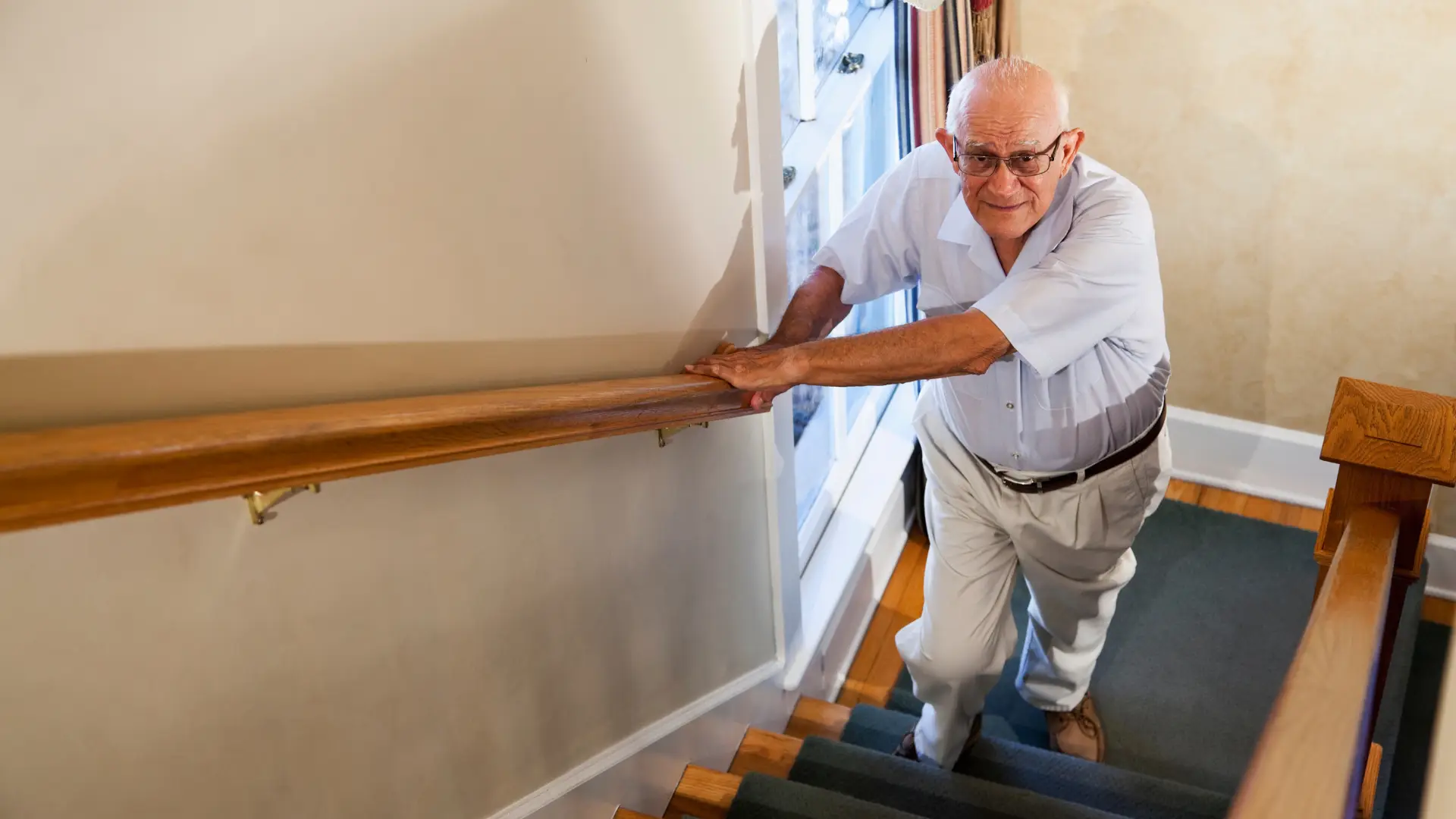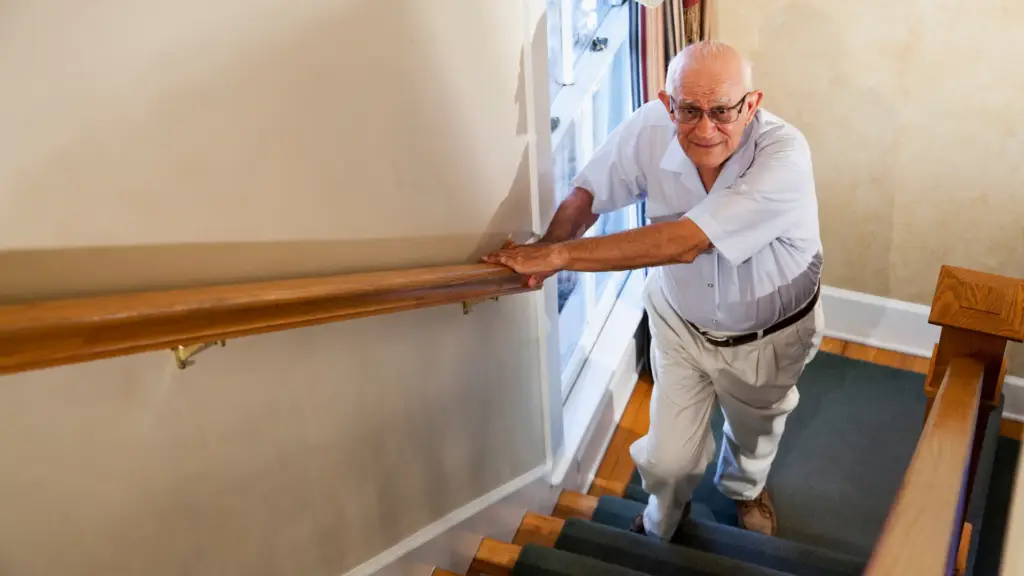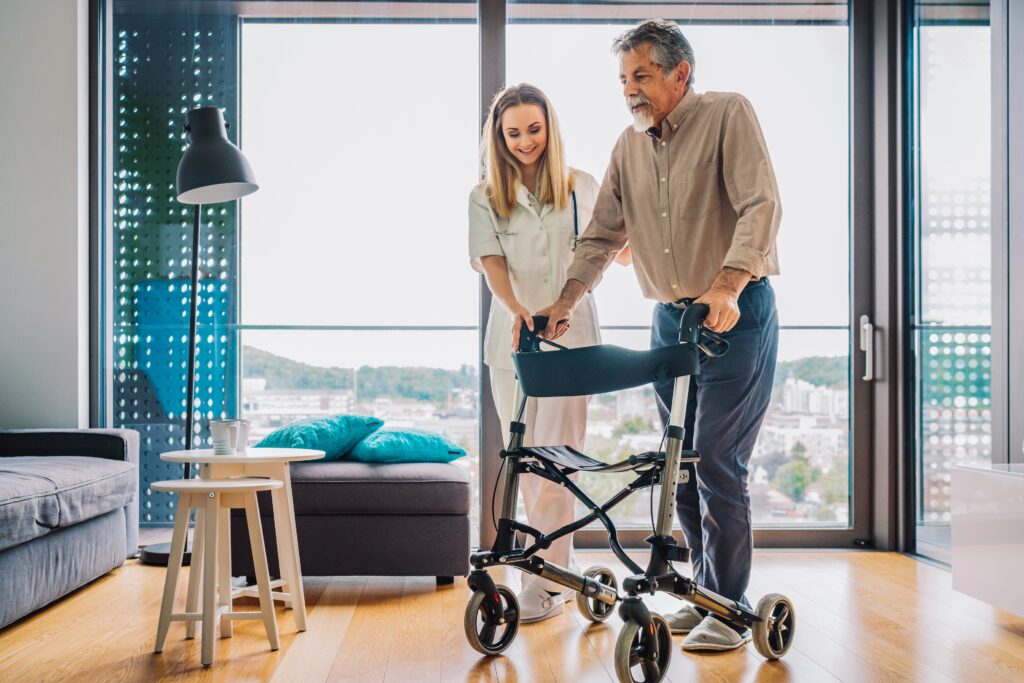
As we age, maintaining our independence and quality of life becomes increasingly important. However, falls are a common risk among seniors that can lead to injuries and a loss of that independence. According to statistics, as many as 20-30% of Canadian seniors experience one or more falls each year, causing 85% of seniors’ injury-related hospitalizations and 95% of all hip fractures, with over one third of seniors being admitted to long-term care following hospitalization for a fall. November is Fall Prevention Month in Canada, which is the perfect time to explore some of the most common causes of falls and the steps we can take to prevent them, keeping our loved ones safe.

Common Reasons for Falls
Falls can occur for various reasons, and understanding these factors is the first step in preventing them. Some common reasons include:
Muscle Weakness
As we age, muscle strength and balance tend to decline, making seniors more prone to falls.
Medications
Certain medications may cause dizziness, drowsiness, or other side effects that increase the risk of falling.
Poor Vision
Vision problems, such as cataracts or glaucoma, can make it difficult to navigate safely.
Environmental Hazards
Clutter, loose rugs, poor lighting, and slippery floors can create hazards at home.
Chronic Conditions
Conditions like arthritis, Parkinson’s disease, and diabetes can affect mobility and balance.
Lack of Physical Activity
Inactivity can lead to muscle weakness and decreased balance.
Common Injuries From Falls
When a child falls, we can generally patch them up with a band-aid and a kiss. For seniors, however, falls can result in severe injuries, many of them life-altering. The average hospital stay for a senior after suffering a fall is 3 weeks, which frequently leads to reduced mobility and independence, higher likelihood of admission to a long-term care facility, and increased risk of premature death (https://www.ncbi.nlm.nih.gov/pmc/articles/PMC4910457/). Some of the most common injuries from falls are listed here.
Fractures
Broken bones, especially in the hip, wrist, and spine, are frequent fall-related injuries.
Head Injuries
Concussions and traumatic brain injuries can occur, leading to memory problems and cognitive decline.
Bruises and Cuts
Minor injuries, like bruises and cuts, can be painful and slow to heal.
Dislocations
Joints such as shoulders and hips can become dislocated in a fall.
Sprains and Strains
Soft tissue injuries can result in pain and limited mobility.
Keeping Our Seniors Safe
Preventing falls in and around the home is essential for maintaining senior independence and well-being. Below are our Top 10 ways to reduce the risk of falls for seniors.
Home Safety Evaluation
Conduct a thorough, room-by-room assessment of your home for potential hazards. Remove clutter, secure rugs, and add handrails where needed. Click here for a list you can use.
Stay Physically Active
Regardless of age, keeping your joints moving and muscles working is imperative to reducing your risk of falls. Muscles, joints, and tendons help us maintain our balance and flexibility. Gentle exercises such as yoga and tai chi are great ways for seniors to stay active. Chair yoga is a low-impact activity that can increase strength and calm the mind.
Good Lighting
Ensure that all areas of your home are well-lit. Install night lights for nighttime trips to the bathroom.
Medication Management
Consult with your healthcare provider to review your medications and their side effects. Always follow the prescribed dosage.

Regular Vision Check-Ups
Have your eyes checked regularly, and update your eyeglasses or contact lenses if necessary.
Proper Footwear
Wear well-fitting, supportive shoes with non-slip soles. Avoid walking in socks or flimsy slippers.
Assistive Devices
If prescribed, use assistive devices like canes or walkers. Ensure they are in good working condition.
Bathroom Safety
Install grab bars in the shower and near the toilet. Use non-slip mats and a shower chair if needed.
Kitchen Safety
Keep commonly used items at waist level to avoid overreaching. Use a stable step stool if necessary.
Stay Hydrated
Dehydration can cause dizziness, so drink plenty of water throughout the day.
How Home Care Services Can Help Prevent Falls at Home
When we think of home care services for seniors, we generally think of assistance with tasks. However, having a professional caregiver come to your home can actually reduce your risk of accidents and injuries as well. Below are a few of the ways home care can help keep you safe in your home.
Assistance with Mobility
Home care providers can help seniors with tasks like walking, transferring, and using assistive devices safely. They can assist with going up and down stairs both inside and outside, as well as tasks like getting in and out of the bath.

Overnight Care
Assistance with nighttime trips to the bathroom and getting in/out of bed helps seniors when they may be tired and at more risk of falling.
Light Housekeeping
Maintaining a clean and clutter-free environment helps reduce the risk of falls.
Companionship
Companionship from home care providers can help alleviate feelings of isolation, encouraging seniors to stay active and engaged. Home care workers can help seniors keep active by accompanying them on walks, taking them to exercise classes, or helping with online exercise programs.
While we have all likely heard the phrase “accidents happen”, by taking preventative measures, we can greatly reduce seniors’ risks of falling at home. Being proactive and making some simple changes around the home means keeping our loved ones safe and able to live in the comfort of their homes as they age. If you or a loved one are looking for safety, comfort, and care at home, please reach out to Just Like Family Home Care for help. We’re here to support you in your journey.